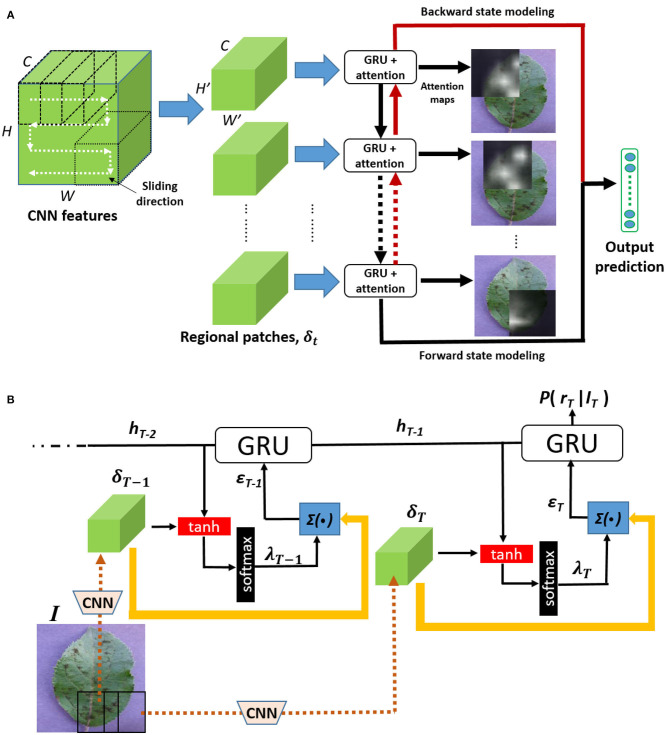Figure 2.
The proposed architecture: from an image of a contaminated plant, feature maps are first extracted from a given convolutional layer of a pre-trained CNN. They are then sliced into several patches following a “snaking” sliding direction. The patches then feed into Gated Recurrent Units that share, combine, and retain relevant information in a bidirectional way to update an internal representation of plant disease. Soft attention mechanism is used to infer discriminating local features. (A) Overall architecture. (B) Soft attention mechanism.

